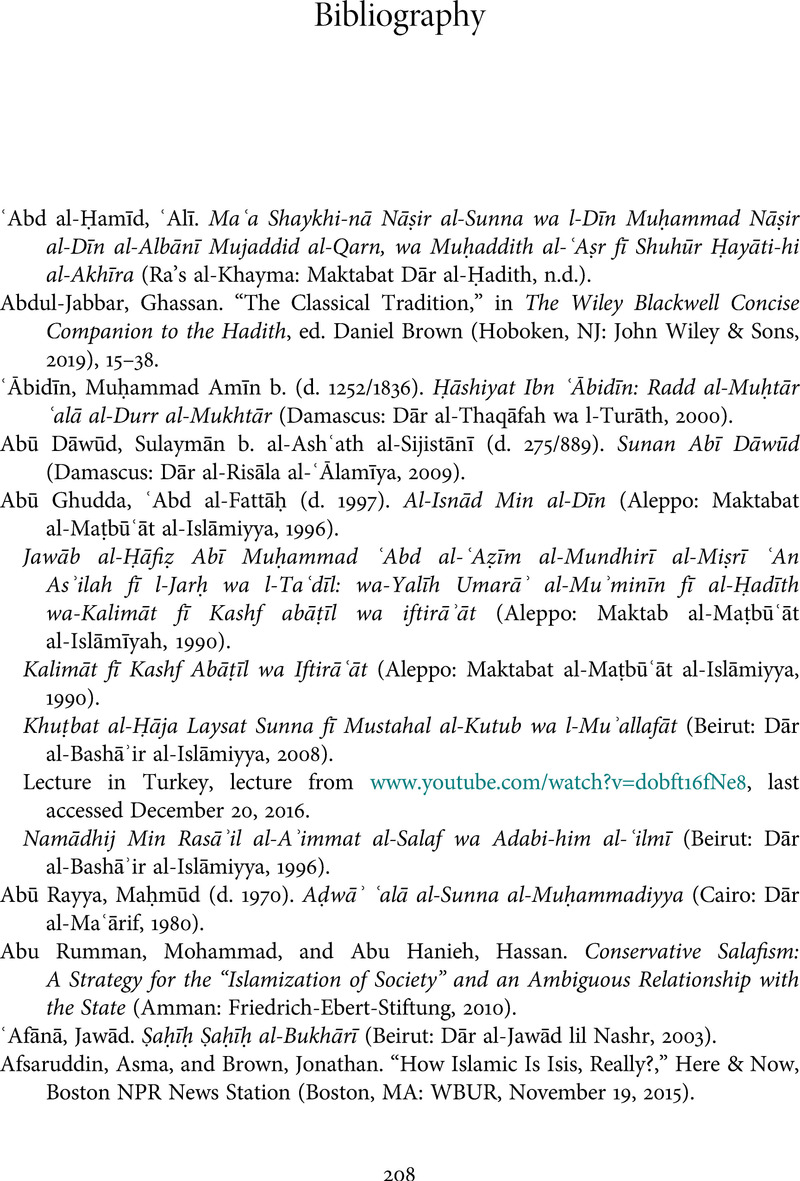Bibliography
Published online by Cambridge University Press: 08 March 2021
Summary

- Type
- Chapter
- Information
- Salafism and TraditionalismScholarly Authority in Modern Islam, pp. 208 - 223Publisher: Cambridge University PressPrint publication year: 2021



